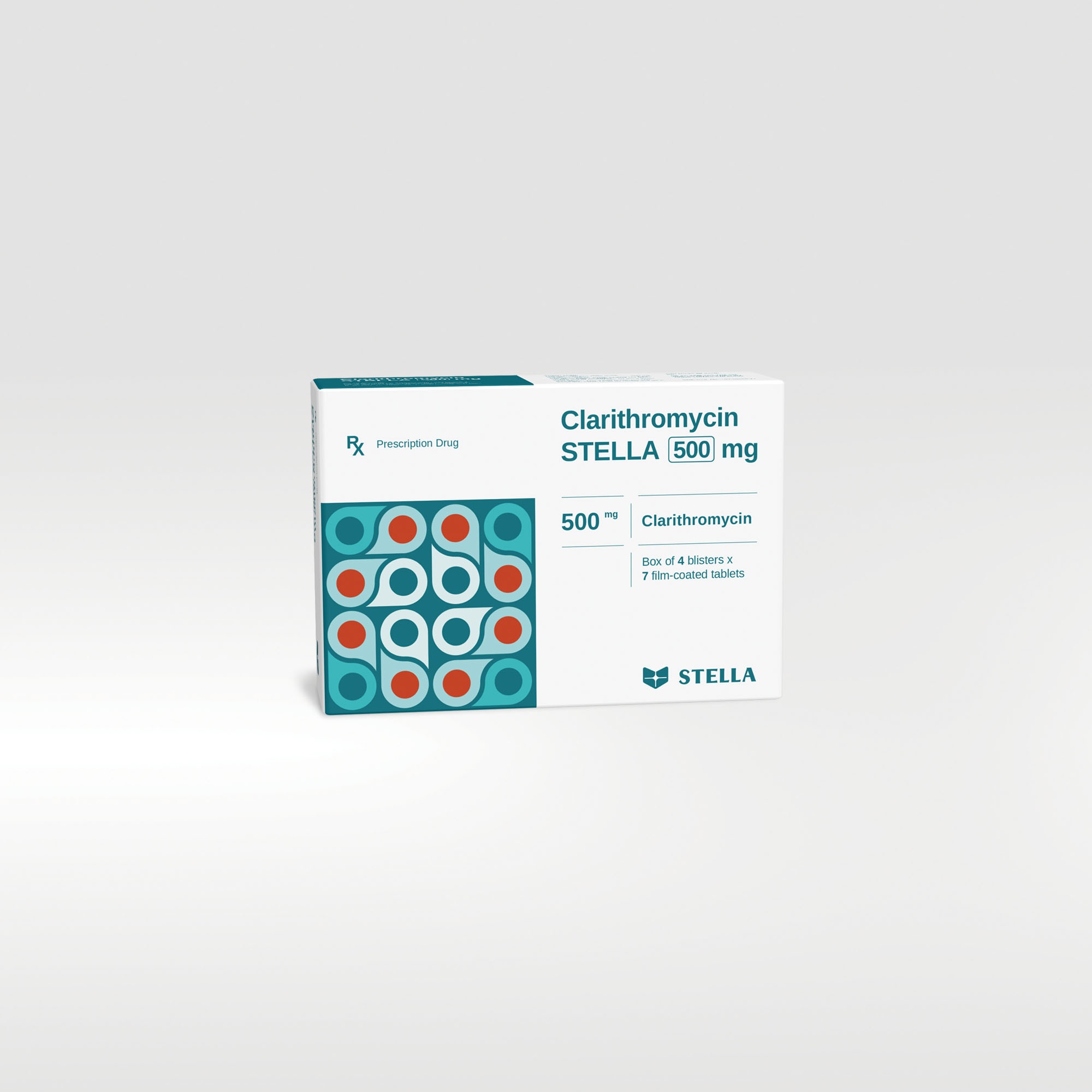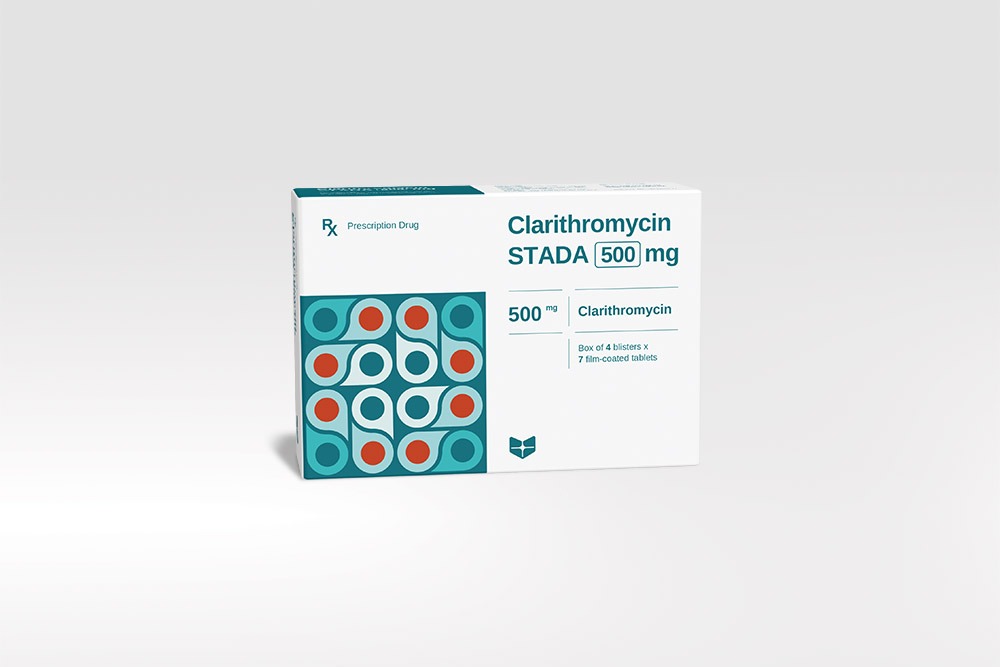Indications
Treatment of infections due to susceptible organisms. Such infections include:
- Lower respiratory tract infections.
- Upper respiratory tract infections.
- Skin and soft tissue infections.
- Disseminated or localized mycobacterial infections due to Mycobacterium avium or Mycobacterium intracellulare. Localized infections due to Mycobacterium chelonae, Mycobacterium fortuitum or Mycobacterium kansasii.
- Prevention of disseminated Mycobacterium avium complex infection in HIV-infected patients with CD4 lymphocyte counts less than or equal to 100/mm3.
- Combination with acid suppression agents for the eradication of H. pylori in patients with recurrence of duodenal ulcer.
Dosage
Patients with respiratory tract/skin and soft tissue infections
- Adults:
Severe infections: can be increased to 500 mg twice daily. The duration of therapy is 5 – 14 days, excluding treatment of community acquired pneumonia and sinusitis which require 6 – 14 days.
- Mycobacterial infections: The recommended dose for adults is 500 mg twice a day.
- Treatment of disseminated MAC infections in AIDS patients should be continued, as long as clinical and microbiological benefit is demonstrated. Clarithromycin should be used in conjunction with other antimycobacterial agents.
- Treatment of nontuberculous mycobacterial infections should continue at the discretion of the physician.
- Dosage for MAC prophylaxis
Adults: 500 mg twice daily.
Eradication of Helicobacter pylori
- 500 mg twice daily in combination with other appropriate anti-microbial treatments and a proton pump inhibitor for 7 – 14 days.
- Triple therapy regimen: 500 mg twice daily in conjunction with amoxicillin 1000 mg twice daily and a proton pump inhibitor in standard dose twice daily for 14 days.
- Four- drug regimen: A proton pump inhibitor take twice a day together with amoxicillin 1000 mg twice daily, clarithromycin 500 mg twice daily in conjunction with tinidazole 500 mg or metronidazole 500 mg twice daily for 14 days.
- 10 days continuous regimen:
A proton pump inhibitor take twice a day together with amoxicillin 1000 mg twice daily for 5 days continuous.
A proton pump inhibitor take twice a day together with clarithromycin 500 mg twice daily and tinidazole 500 mg twice daily for 5 days.
Renal impairment
- ClCr < 30 ml/min, the dosage should be reduced by one-half. Treatment should not be continued beyond 14 days.
Usage
- Clarithromycin STELLA 500 mg is administered orally and may be given without regard to meals.










